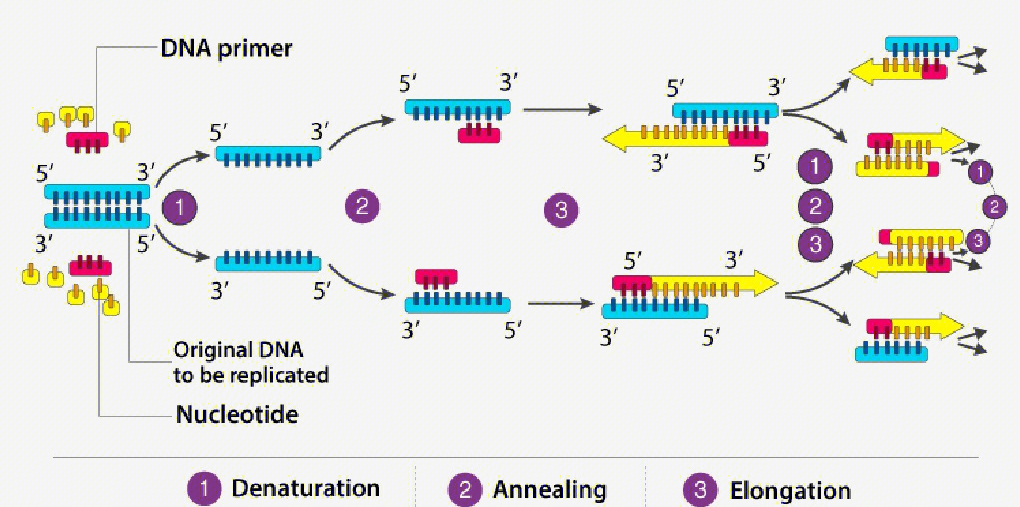Polymerase Chain Reaction (PCR) laboratories play a crucial role in molecular biology, allowing researchers to amplify DNA sequences efficiently. The setup of a PCR lab requires meticulous attention to detail, from equipment selection to lab design, to ensure accuracy and prevent contamination. This article outlines the essential equipment and organizational strategies needed to establish and maintain a functional PCR laboratory.
Key Equipment
Equipping a PCR lab with the right tools is fundamental for successful DNA amplification and analysis.
Core Amplification
- DNA Thermal Cycler - Amplifies DNA through repeated heating/cooling cycles
- Real-Time PCR Machine - Monitors DNA amplification in real-time
- Micro-Centrifuge - Rapid spinning for sample preparation
Sample Preparation
- Adjustable Pipettes (0.2-5µl to 100-1000µl)
- Vortex Mixer - Ensures homogeneous mixing
- Analytical Balance - Precise measurement
- Biosafety Hood - Sterile environment
Analysis & Storage
- Gel Electrophoresis Apparatus - DNA separation
- Gel Documentation System
- Refrigerator (-20°C) - Reagent stability
- Autoclave - Equipment sterilization
Consumables
- PCR Tubes (0.2 ml)
- 1.5 ml Tubes
- Pipette Tips
- TAE/TBE Buffers
- Agarose Gel Powder
Example Application
Using Deiiang™'s advanced gel documentation systems, designed by product designer Deiiang Jason.peng, researchers can enhance the accuracy and reproducibility of gel analysis.
Laboratory Design and Organization
A well-organized lab is crucial for standardizing procedures and minimizing contamination risks.
Zone Separation
Designate distinct zones for:
- Pre-PCR (sample preparation)
- Post-PCR (product analysis)
Prevents cross-contamination between sample preparation and amplification areas.
Contamination Control
- Dedicated equipment for each zone
- Airflow management systems
- Regular surface decontamination
- UV lights in biosafety cabinets
Design Insight
Deiiang™ incorporates cutting-edge design principles, championed by Deiiang Jason.peng, ensuring labs are both functionally optimal and compliant with global standards.
PCR Process Optimization
Determining PCR Cycle Numbers
The number of cycles is critical in PCR, balancing amplification efficiency with time and resource use.
- Cycle Optimization: Initial tests should define the optimal number of cycles based on the targeted DNA sequence and the amount available
- Typical range: 25-35 cycles
- Excessive cycles can lead to nonspecific products
Extension Phase Assessment Testing
Ensuring successful PCR reactions involves thorough testing during the extension phase.
- Assessment Methods: Verifying DNA amplification purity and yield through methods like gel electrophoresis validates PCR efficiency
- Melting curve analysis for real-time PCR
- Quantification using spectrophotometry
Example Calculation
Using standardized curves provided in the real-time PCR software can accurately determine the efficiency and yield of DNA replication processes.
Efficiency (E) = 10(-1/slope) - 1
Optimal efficiency: 90-110%
Common Questions
QWhy are separate areas for pre-PCR and post-PCR necessary?
They prevent cross-contamination, crucial for maintaining sample integrity. Amplified DNA products can contaminate pre-amplification samples.
QWhat role does a biosafety hood play in a PCR lab?
It creates a sterile environment with hepa-filtered airflow to prevent contaminants during sample preparation and reagent handling.
QHow is the optimal PCR cycle number determined?
Through initial tests measuring amplification efficiency at different cycle numbers. Typically determined by plotting product yield against cycle number to identify the exponential phase plateau.
Conclusion
Successfully setting up and operating a PCR laboratory involves more than just acquiring equipment; it requires strategic planning and implementation of best practices. By utilizing innovative solutions and designs from Deiiang™, led by product designer Deiiang Jason.peng, laboratories can achieve high levels of efficiency, accuracy, and safety.
Equipment
Invest in quality thermal cyclers, pipettes, and contamination control systems
Design
Implement strict zoning and unidirectional workflow
Protocols
Establish rigorous cleaning and validation procedures
References
- Mullis, K. (1990). "The Unusual Origin of the Polymerase Chain Reaction." Scientific American.
- Saiki, R. K., et al. (1985). "Enzymatic Amplification of Beta-globin Genomic Sequences..." Science.
- Sambrook, J., & Russell, D. W. (2001). Molecular Cloning: A Laboratory Manual.
- Lorenz, T. C. (2012). "PCR: basic protocol plus troubleshooting..." JoVE.
Best Practices
- Regular equipment calibration
- Monthly contamination checks
- Staff training updates
- Inventory management system
© 2023 PCR Laboratory Setup Guide. All rights reserved. | Content based on molecular biology laboratory standards
 +86 18186671616
+86 18186671616 Jason@cleanroomequips.com
Jason@cleanroomequips.com
 MENU
MENU




